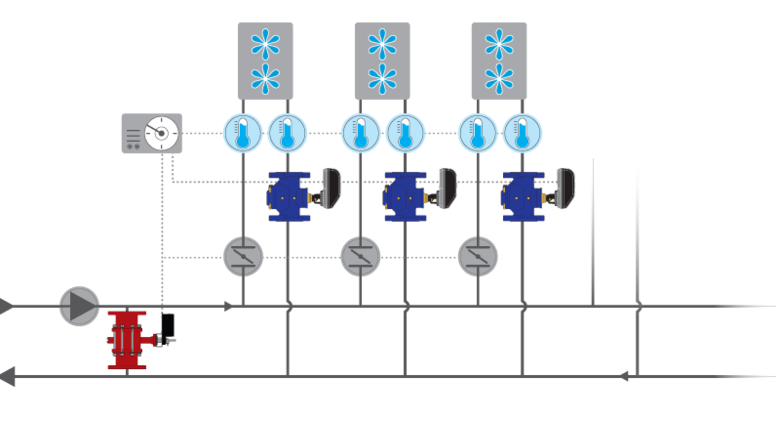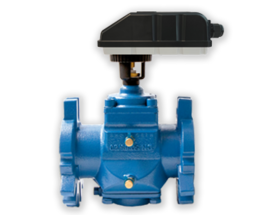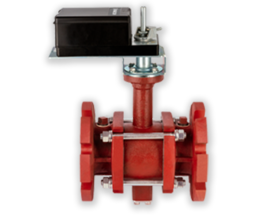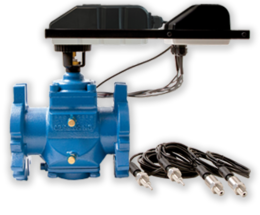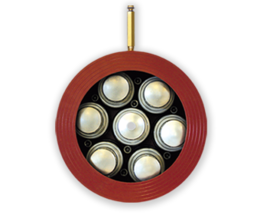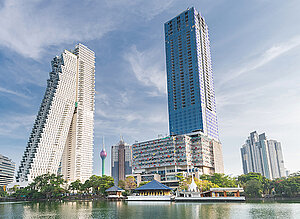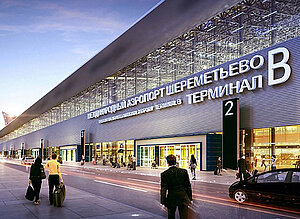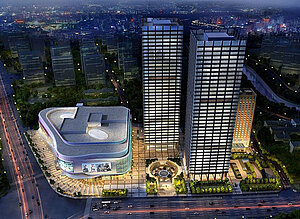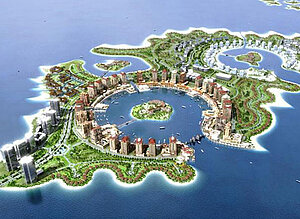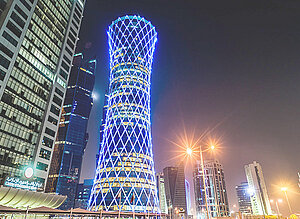Chillers
What is a Chiller?
A chiller is a unit which remove heat from water and the chilled water is hereafter used for air conditioning in the entire building. Chillers are commonly seen in large-size buildings from commercial- over industrial- to institutional facilities. Chillers are typically located in the basement or on the roof top and can be either water- or air cooled. Water-cooled chillers will use cooling towers, whereas air-cooled versions will blow the hot air across its condenser to disperse the unwanted heat into the atmosphere or recovered for heating purposes. Water-cooled systems are considered as the more efficient solution.
How is a Chiller Application Optimized?
With proper balance, a chiller will have the correct flow at any load condition and thereby reduce cooling costs. FlowCon recommends three different solutions to a chiller installation:
1. Chillers with Pressure Independent Control (PICV)
The PICV will react to system pressure changes and regulate the flow of water to required flow by adjusting the actuator position. This helps the system to be accurately controlled even with pressure changes and reduced loads.
→ Download Application Drawing Example
FlowCon recommends the following PICV (and Control Valve):
2. Chillers with Pressure Independent Temperature Control (PITCV)
The PITCV will react only to change in ΔT, which can be either deliberately set to a new target or automatic due to occupancy change. The PICV actuator will only move if a ΔT change is sensed. By optimizing ΔT, flow may be reduced to a minimum resulting in significant energy savings and extended life of equipment, while providing pressure independent ΔT control and optimized comfort.
→ Download Application Drawing Example
FlowCon recommends the following PITCV (and Control Valve):
3. Chillers with Automatic Balancing (ABV)
The automatic balancing valve will react to system pressure changes and limit the flow of hot or cold water to required max. flow helping the system to be accurately controlled even with pressure changes. This solution is recommended to be installed with the separate butterfly valve.
→ Download Application Drawing Example
FlowCon recommends the following ABV (and Control Valve):
Some FlowCon Projects with Chillers
See all projects
Colombo City Centre, Colombo, Sri Lanka
Mixed-use complex with apartments, hotel, shopping mall and entertainment
Sheremetyevo Airport, Terminal C, Moscow, Russia
Are you travelling to Moscow ? Then you will come across FlowCon even though you may not notice it, but FlowCon valves will guarantee optimal indoor…
Sheremetyevo Airport, Moscow, Russia
New facilities for 2018 FIFA World Cup and everybody stays cool with FlowCon
Tianjin Lujiazui Financial Plaza, Tianjin, China
LEED certified twin-tower offices and shopping center

Still in Doubt?
Please Contact Us
If You are in doubt which Solution to choose to Your Application or how a specific product is working, please do not hesitate contacting FlowCon.
We will react as soon as possible, and written reply is normally within 8 hours if Your question is asked in English and during office hours. Other languages and requests asked during vacation time or weekends may experience longer response time. Likewise, for any special and out of standard requests, You may not see an immediate reply, but we are responsive.
